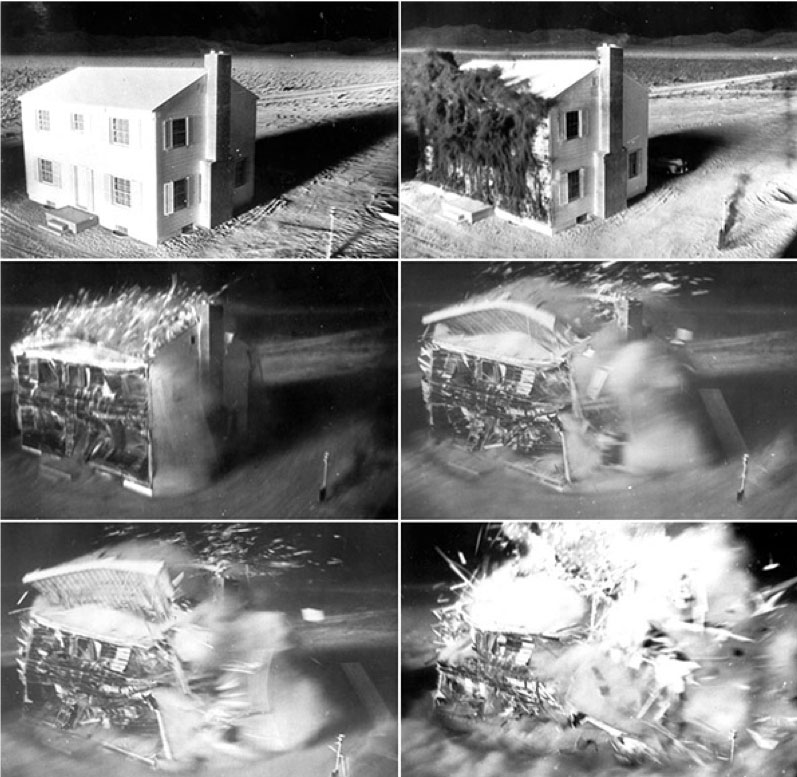The Blast Wave
A fraction of a second after a nuclear explosion, the heat from the fireball causes a high-pressure wave to develop and move outward producing the blast effect. The front of the blast wave, i.e., the shock front, travels rapidly away from the fireball, a moving wall of highly compressed air.

The air immediately behind the shock front is accelerated to high velocities and creates a powerful wind. These winds in turn create dynamic pressure against the objects facing the blast. Shock waves cause a virtually instantaneous jump in pressure at the shock front. The combination of the pressure jump (called the overpressure) and the dynamic pressure causes blast damage. Both the overpressure and the dynamic pressure reach to their maximum values upon the arrival of the shock wave. They then decay over a period ranging from a few tenths of a second to several seconds, depending on the blast's strength and the yield.